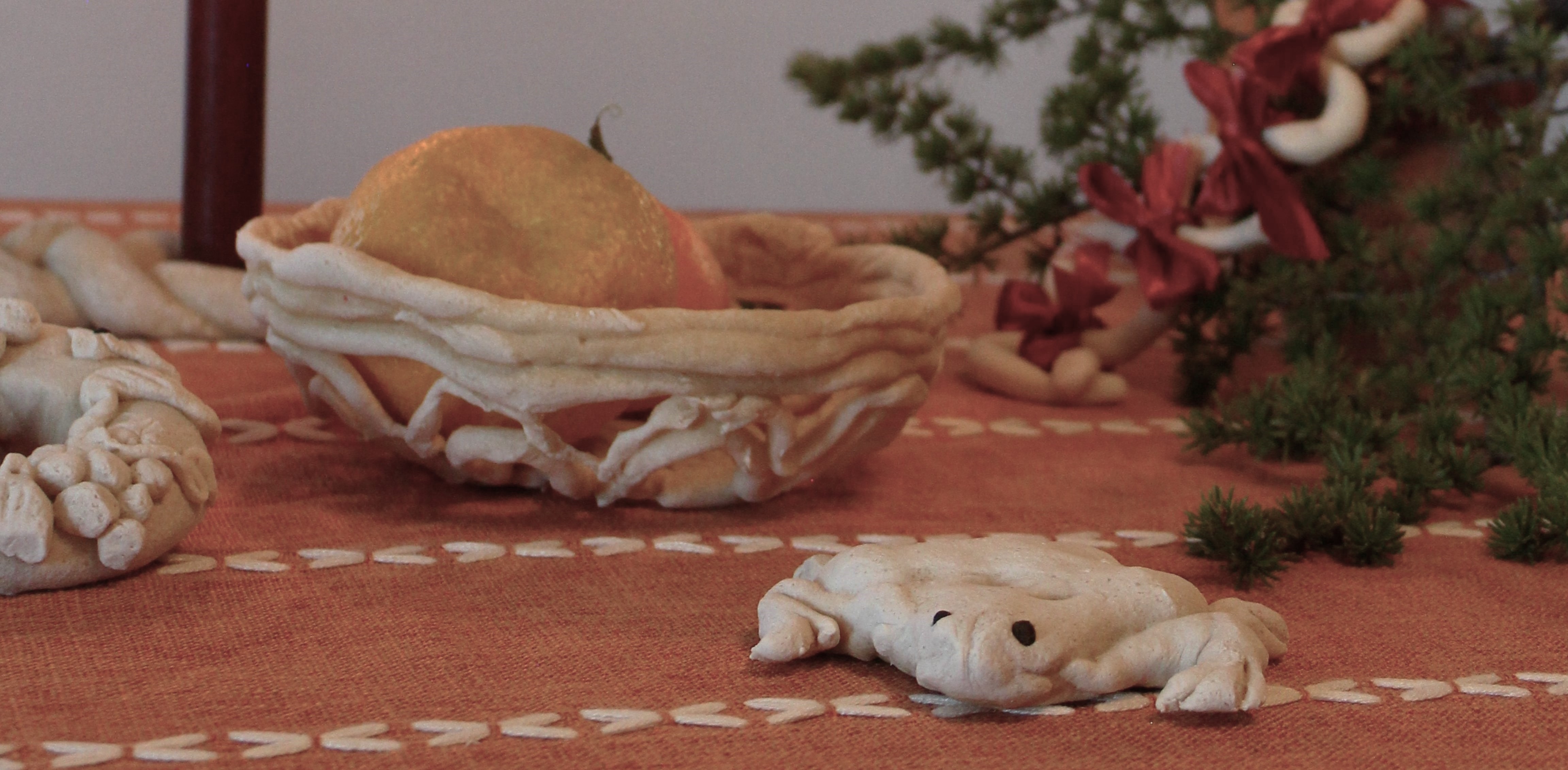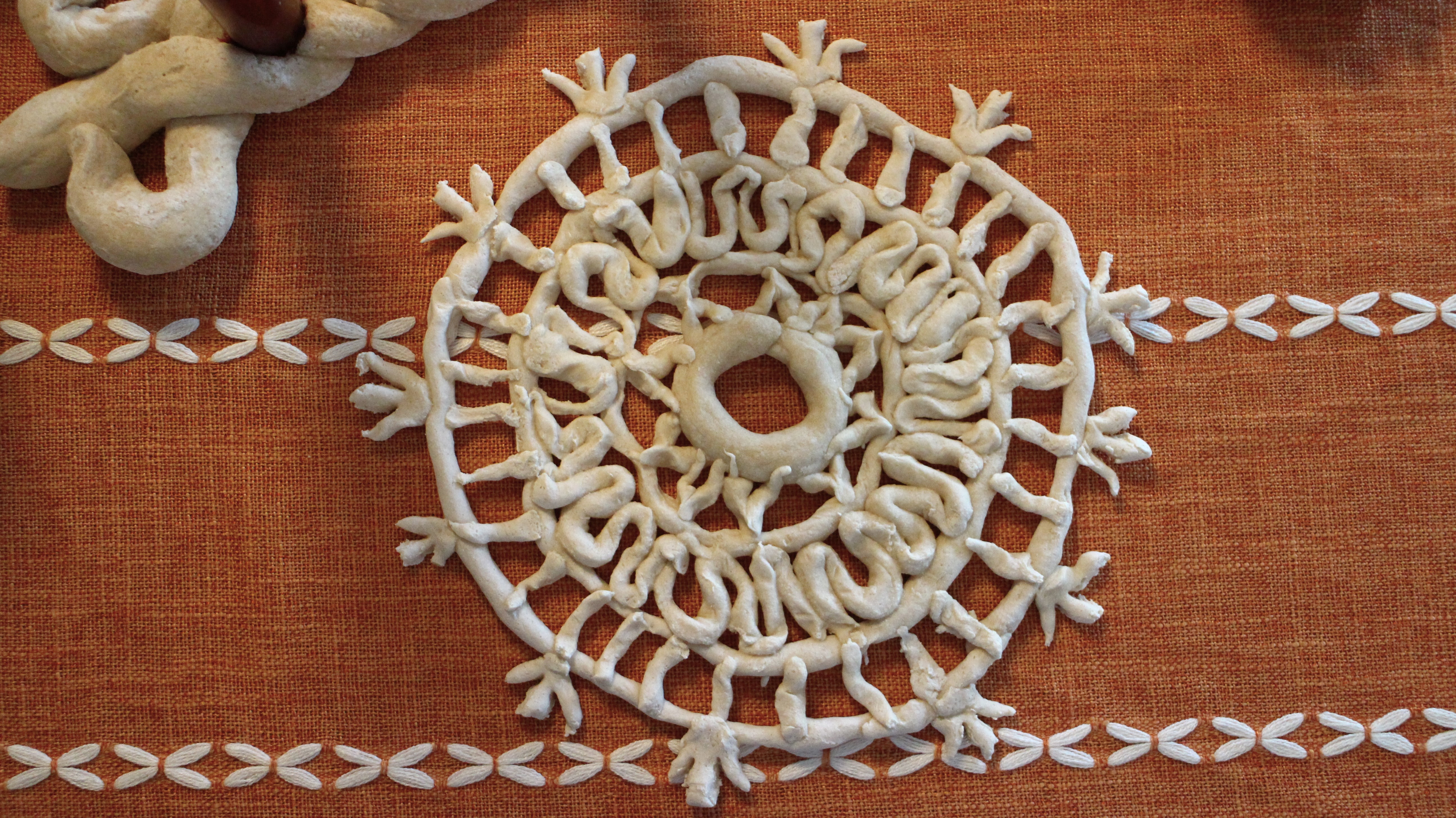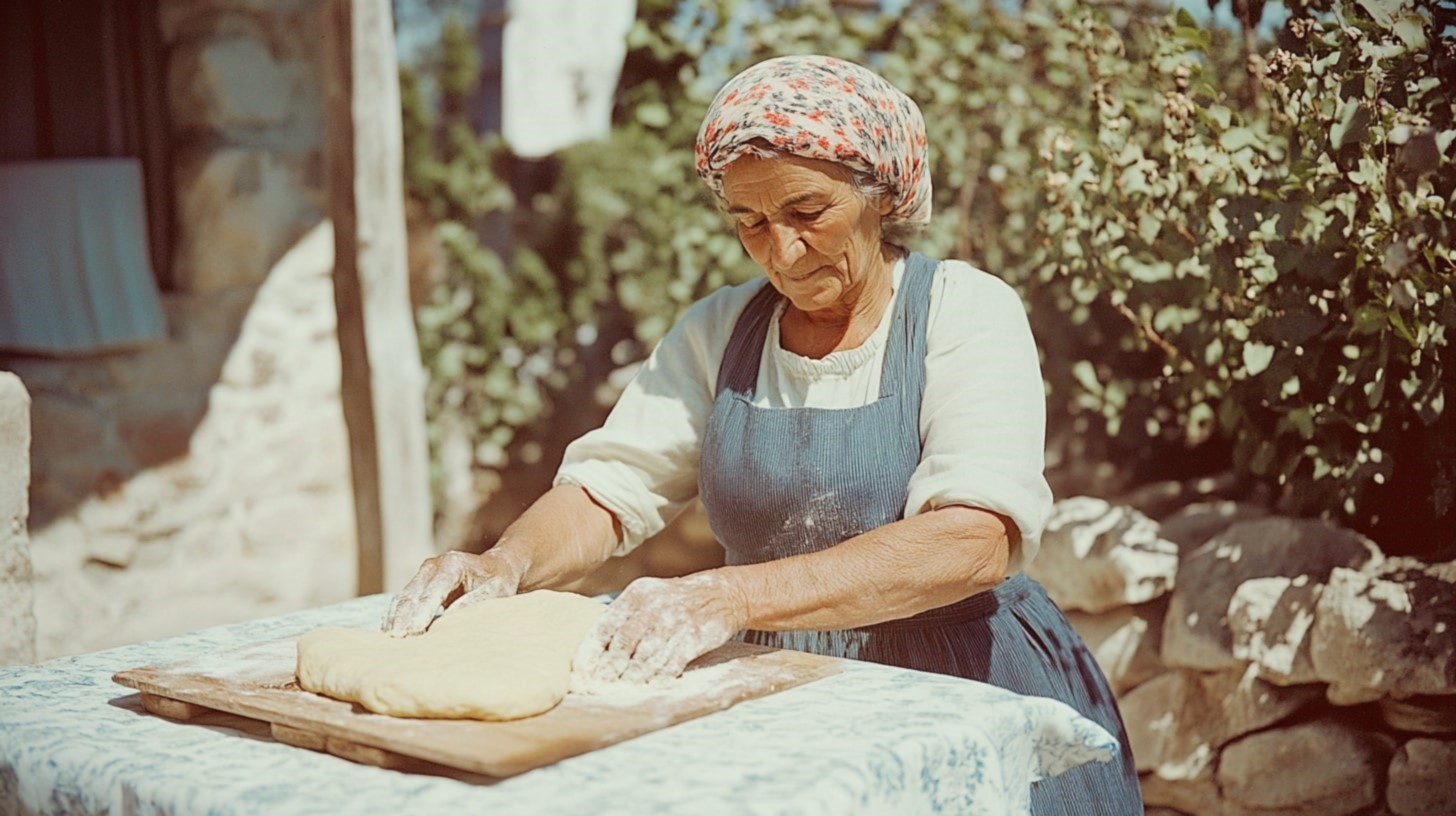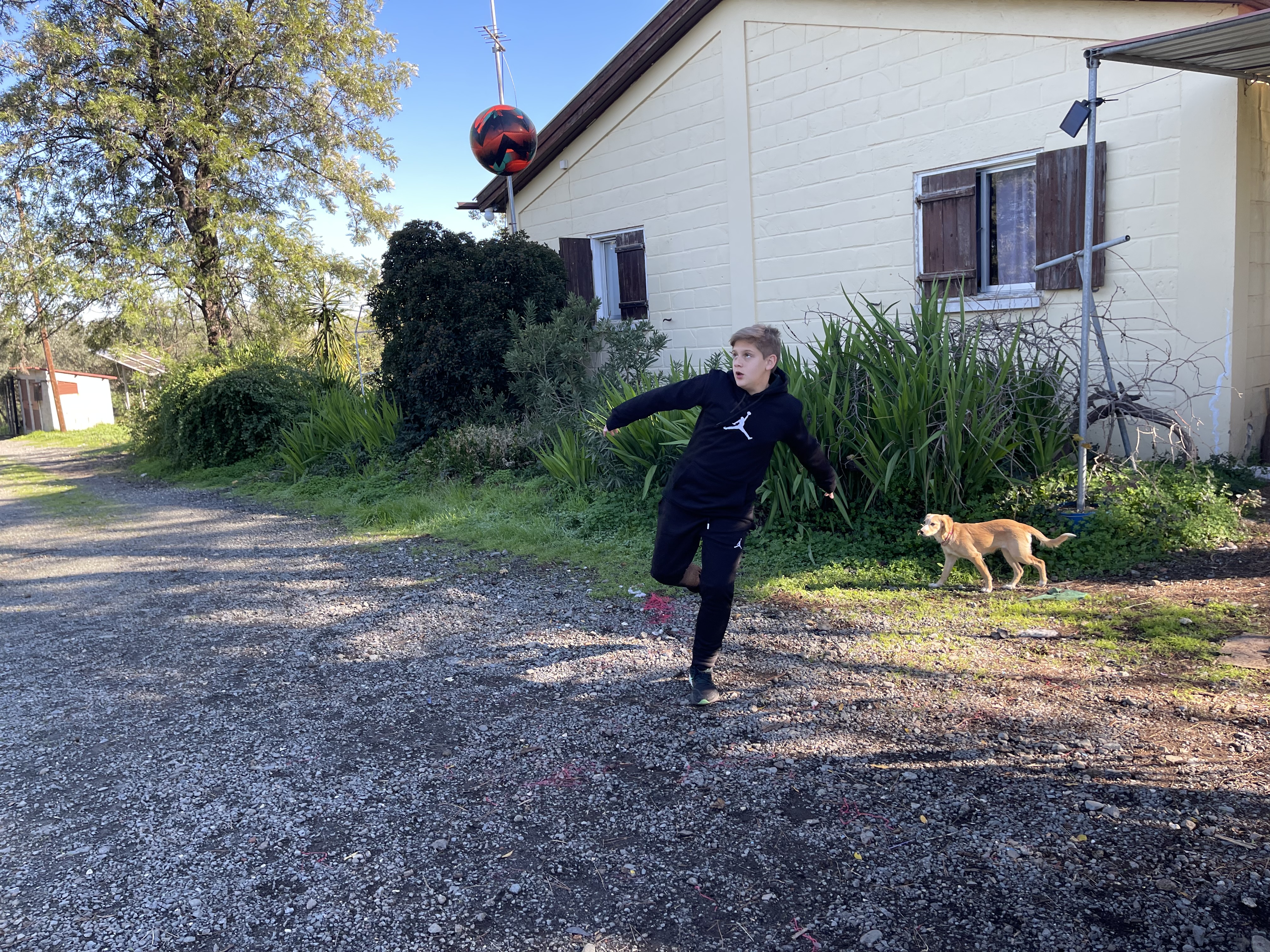‘There was a time when every wedding, birth, baptism and death on the island was commemorated and celebrated in dough’
If you found a frog on your bread, what would you do?
Well, if the bread you were looking at was Ploumisto Psomi, the frog would be a good omen. In Cyprus, decorated breads have always had deep cultural and spiritual significance. And every design carries multi-layered symbolism…
Dough-crafted frogs atop your bread, for instance, were a plea for rain – a vital blessing in this Mediterranean climate. But they also stood for fertility, as well as a nod to the resilience and hardships of men!
Flowers meant purity, as did a pigeon. Though if your bread was decorated with two pigeons, it was more likely for a wedding, and stood for purity in love.
“Fertility and faith were common themes,” reveals Chara Nicolaou. “Newlyweds might receive breads decorated with frogs and snakes to bless their union with children. On religious holidays, people would ornament their bread with crosses and grapes as a token of faith – or perhaps a walnut, to symbolise the stable in which Christ was born.”

Avgoti, a braided or twisted bread with a red boiled egg atop, is still common at Easter, she adds. But it was also once popular at Christmas, when the egg was left plain.
“Zempilouthkia, small pockets fashioned from dough, were an entreaty for abundance and prosperity,” she continues. “And Anthropouthkiawerehuman figures made from bread that often represented family members. Come New Year, you’d put all the family figures into a basket and leave them out for St Basil to bless. You’d add a candle so he could see, and a cup of wine for him to drink. And you’d also bake St Basil bread, genopita – which isn’t the same thing as today’s vasilopita, but is rather a decorated loaf – and when you cut and ate it, you’d leave a slice for the saint.”
Chara’s knowledge of traditional Cypriot breads is extensive. But then so is her understanding of the many customs and traditions that define our island. The talent behind the popular YouTube channel and Instagram account Joy of Origins, she celebrates the authentic Cyprus: shining a light on the ancient customs of the past, bringing heritage into the present and onto our screens.
For the most part, her content features beautifully-shot videos of Cyprus’ landscapes, traditions, and crafts, capturing the essence of a simpler, more connected way of life. To prepare, she delves into old texts and records to uncover forgotten practices, or spends hours learning ancient traditions from the island’s elderly. And then she’ll try the customs herself: foraging for herbs, preparing ancient recipes, or crafting traditional items.
But, this December, she’ll be stepping away from the screen to share her knowledge in person. And, for the first time, she’ll be hosting two workshops that focus on one of Cyprus’ most intriguing and under-researched staples. Bread.
“Ploumisto Psomi is Cyprus’ ornamental bread, a catch-all term that refers to any decorated bread,” Chara explains. “And that’s what we’ll be looking at in the workshops: the different types of Ploumisto Psomi, their symbolism and stories.
“There was a time when every wedding, birth, baptism and death on the island was commemorated and celebrated in dough. These breads carried profound meanings tied to faith, fertility, abundance, love and protection, and their decorations were often specific to certain regions of Cyprus.
“But few types are now made,” she sighs. “You may find genopites at Christmas, and avgotes at Easter. But you’re unlikely to gather round the kitchen table and make zembilouthkiaor anthropouthkiaor poulliaanymore. Decorated breads belong mainly to our past.”
Chara’s two workshops will explore the cultural heritage of these unique ornamental breads: their historical significance, intricate symbolism and the creative processes behind their craftsmanship. Participants will also be making and baking their own unique Ploumisto Psomi – blending history with creativity to craft their own, more modern loaves.
“Most Ploumisto Psomi were not meant to be eaten,” Chara reveals. “Instead, they were ornaments. Or even games!
“I’ve heard reference of a wedding game called The Apple Tree of Lapithos, in which little bread birds were hung on a cane tree; one player guarded the tree, while others attempted to steal the birds away. The number of birds remaining at the end signified the number of children the happy couple would bear!”
But for the most part, she continues, ornamental breads were hung around the house, or used in annual celebrations. Made from flour, water and salt, they were crafted to last. Though the odd few were eaten – in which case honey, cinnamon, mastika or anise might be added for flavour.

“In our workshops, we’ll be making purely decorative breads,” Chara reveals. “Our goal is to help people connect with this tradition in a way that speaks to them in the modern day; in a way that fits into their lives and homes.
“So we’ll be adding a dollop of Christmas spirit, an ounce of playfulness, and creating our ownPloumisto Psomi – maybea decoration for the tree, or a candle holder, or a little figure for our children. Perhaps even a frog or two!”
By the end of the workshop, each participant will have not only created something beautiful and meaningful but also transformed an ancient custom into something truly their own.
“As we shape the dough, we’re also shaping our links to the past,” says Chara. “We’re honouring our traditions; reimagining them in ways that speak to our lives today. Ploumisto Psomi has always been more than mere bread: it was a way in which our ancestors expressed their hopes, dreams, and faith; their connection to the land and each other. It told a story,” she concludes. “And this Christmas, in our workshops, we’ll be adding a new chapter.”
The two bread workshops will take place on December 7 and 14 in Nicosia. For more information, visit the Instagram account @joyoforigins







Click here to change your cookie preferences